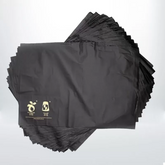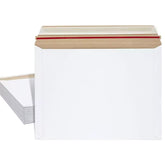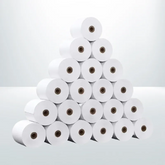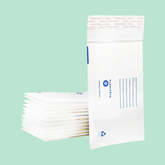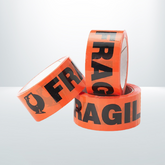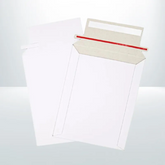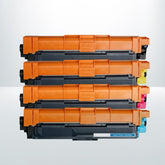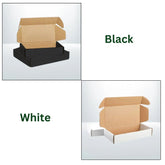In this article, we will explore the trends and future outlook of packaging in the country.
Discover how consumer demand for sustainable packaging, advancements in technology and materials, and the shift towards personalized packaging experiences are shaping the industry.
Additionally, we will delve into the emphasis on convenience and functionality, as well as provide insights into the future trends and outlook for packaging innovation.
Consumer Demand for Sustainable Packaging
Consumers in Australia are increasingly demanding sustainable packaging options. They’re becoming more conscious of the environmental impact of packaging waste and are actively seeking products that are packaged in a sustainable manner.
This shift in consumer behavior can be attributed to several factors. Firstly, there’s a growing awareness of the negative consequences of single-use plastics on the environment, prompting consumers to look for alternatives. Secondly, there’s a general trend towards sustainable living and ethical consumption, with consumers prioritizing products that align with their values.
Additionally, government initiatives and regulations have also played a role in raising awareness and promoting sustainable packaging practices. As a result, businesses in Australia are responding to this demand by adopting more eco-friendly packaging solutions, such as biodegradable materials and recyclable packaging options.
Advancements in Technology and Materials
One major advancement in technology and materials for packaging in Australia is the introduction of innovative and sustainable alternatives to traditional packaging materials.
As consumers become more conscious of their environmental impact, there’s a growing demand for packaging solutions that are eco-friendly and reduce waste.
Companies are now exploring options such as biodegradable plastics, compostable materials, and plant-based packaging. These alternatives aren’t only more sustainable, but they also offer similar or even better performance than traditional materials.
For example, biodegradable plastics can be just as durable and have the same barrier properties as conventional plastics.
Additionally, advancements in technology have allowed for the development of packaging materials that are lighter, thinner, and more flexible, resulting in reduced resource consumption and transportation costs.
This continuous progress in technology and materials is revolutionizing the packaging industry in Australia and paving the way for a more sustainable future.
Shift Towards Personalized Packaging Experiences
As you explore the evolution of packaging in Australia, you’ll notice a significant shift towards personalized packaging experiences.
Gone are the days of generic, one-size-fits-all packaging. Today, companies are striving to create unique and memorable experiences for their customers through personalized packaging.
Whether it’s adding a customer’s name or initials to the packaging, or creating customized designs that reflect the individual’s preferences, personalized packaging is becoming increasingly popular.
This shift is driven by the desire to create a more personal connection with consumers and to stand out in a crowded market. Additionally, advancements in technology have made it easier and more cost-effective for companies to offer personalized packaging options.
As a result, consumers are now expecting and seeking out these personalized experiences, and companies are responding by embracing this trend.
Emphasis on Convenience and Functionality
To enhance the personalized packaging experiences mentioned earlier, companies in Australia are placing an emphasis on convenience and functionality. Packaging is no longer just about protecting the product; it’s also about making the consumer’s life easier.
One trend that has emerged is the use of resealable packaging. This allows consumers to open and close the packaging multiple times, ensuring the product stays fresh and reducing waste.
Another convenience-focused innovation is the use of easy-to-open packaging. Companies are incorporating tear strips or perforated lines to make it effortless for consumers to access the product inside.
Additionally, packaging is being designed to be more compact and space-efficient, allowing for easier storage and transportation.
With the growing importance of convenience and functionality, companies are striving to create packaging that not only looks good but also adds value to the consumer’s experience.

Future Trends and Outlook for Packaging Innovation
Looking ahead, you can expect to see even more exciting advancements in packaging innovation in Australia, with a focus on enhancing convenience and functionality.
As consumers increasingly seek convenience in their everyday lives, packaging will continue to evolve to meet these demands. One future trend to watch out for is the integration of smart technology into packaging. This can include features such as QR codes or RFID tags that provide consumers with detailed product information, track the product’s journey, or even enable interactive experiences.
Another trend is the development of sustainable packaging solutions. With growing concern for the environment, packaging innovation will likely prioritize materials that are biodegradable, recyclable, or made from renewable resources.
Additionally, there may be a surge in personalized packaging, allowing consumers to customize their packages according to their preferences.
Frequently Asked Questions
What Are the Current Consumer Trends and Preferences When It Comes to Packaging Design?
When it comes to packaging design, you, as a consumer, are currently looking for:
- Eco-friendly materials
- Minimalistic designs
- Functional packaging that’s easy to open and close.
How Does the Australian Packaging Industry Compare to Other Countries in Terms of Sustainable Practices?
In terms of sustainable practices, the Australian packaging industry is making great strides. Compared to other countries, it has implemented innovative strategies to reduce waste and promote eco-friendly materials.
One notable initiative is the increased use of recyclable packaging materials. Australian companies have been actively transitioning from traditional, non-recyclable materials to more environmentally friendly options, such as paper, cardboard, and biodegradable plastics. This shift not only reduces the amount of waste generated but also makes it easier for consumers to recycle their packaging.
Additionally, the industry has been focusing on reducing the overall amount of packaging used. Through the implementation of efficient packaging design and optimization techniques, companies have been able to significantly decrease the amount of material required for their products. This not only saves resources but also reduces the carbon footprint associated with packaging production and disposal.
Furthermore, the Australian packaging industry has been investing in research and development to explore alternative packaging solutions. This includes exploring new materials, such as plant-based plastics and compostable packaging options. By investing in innovative solutions, the industry aims to find more sustainable alternatives that can replace traditional packaging materials without compromising product integrity or functionality.
Are There Any Specific Regulations or Government Initiatives in Place to Promote Sustainable Packaging in Australia?
There are specific regulations and government initiatives in place to promote sustainable packaging in Australia.
These measures aim to encourage companies to adopt environmentally friendly practices and reduce the impact of packaging waste.
What Are Some of the Emerging Technologies and Materials Being Used in Packaging Design?
Some emerging technologies and materials being used in packaging design include:
- Biodegradable materials
- Smart packaging with sensors
- 3D printing
These innovations are revolutionizing the way products are packaged and enhancing the consumer experience.
How Are Brands Incorporating Personalization Into Their Packaging Experiences, and What Benefits Does It Offer to Consumers?
Brands are incorporating personalization into packaging to enhance your experience. This trend offers several benefits. Firstly, it creates a unique connection between the consumer and the brand. By personalizing the packaging, brands can make customers feel more valued and appreciated. This, in turn , can lead to increased brand loyalty and repeat purchases. Secondly, personalization adds a sense of exclusivity to the product. When a customer receives a package with their name or a personalized message on it, they feel special and privileged. This can make them more likely to share their positive experience with others, further boosting brand awareness and sales. Overall, incorporating personalization into packaging is a strategic move for brands to improve customer satisfaction and strengthen their brand image.
Conclusion
In conclusion, the packaging industry in Australia is evolving to meet the changing demands of consumers.
There’s a growing demand for sustainable packaging options, driven by increased awareness of environmental issues. Advancements in technology and materials are allowing for innovative and more eco-friendly packaging solutions.
Additionally, the shift towards personalized packaging experiences and emphasis on convenience and functionality are shaping the future of packaging in Australia.
The industry is poised for continued growth and innovation as it adapts to meet the evolving needs of consumers.





